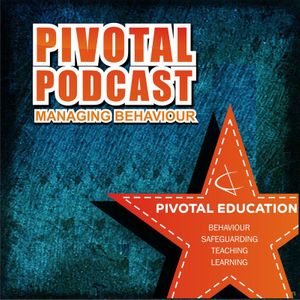Sinéad Kennedy on how to use drama and creativity in the classroom – PP163
Pivotal Podcast - A podcast by Pivotal Education

Categories:
Sinéad is Senior Lecturer in Primary English Education at The University of Brighton. She has been involved in very exciting research into creativity in the classroom. As a primary teacher for 15 years, Sinéad has been looking at how we can hold onto creativity in the classroom, particularly around the use of drama, despite the pressures and demands of the world teachers find themselves in now. This means that the main focus of her work at the moment is teacher confidence in teaching drama and creativity throughout the curriculum. Are most teachers not confident in taking risks and using drama in their teaching? When Sinéad mentions drama to teachers, it tends to bring a lot of anxiety out in them. They see drama as performance but Sinéad’s work is about the process of drama and how we can unpick this in the primary classroom. She believes that drama as a vehicle for learning is very powerful. It can be used in a much more integrated way across the curriculum than just as performance. How did Sinéad develop her research and what is its purpose? It all came from her own experiences of standing, feeling uncomfortable in front of 30 children wondering how she was going to get them to access a particular text. She wanted, for example, to help them access the challenging themes in stories and she felt that drama has a very pivotal role to play in supporting children’s understanding of concepts like loss, grief and friendship. This can be done via the secondary narratives in books. What is the process for getting drama into as much of the curriculum as we can? Sinéad takes a text with her student teachers at Brighton and looks for ‘bridges’ or gaps in the text where specific drama techniques such as: * freeze-frame * echo circle * thought tapping * conscious alley * role-playing the action in that part of the story If we model the story for the child, they can then draw on the experiences of the story and what the characters are experiencing and help them to extend their language and apply them to their own lives. Sinéad gives a great example of getting into role herself as Samuel Pepys and also tells us about one of her student teachers in a science lesson who worked with her class to role-play the life cycle of a piece of sweetcorn as it went through the process of being eaten! This led to amazing use of language! Sinéad points out how important enabling children to play with language is. How does Sinéad give teachers and children the confidence they need to try drama techniques out in the classroom? Sinéad says that she too also has some anxiety whenever she teaches a drama session. She thinks it’s important to feel that it’s a little bit nerve-wracking. She talks about teachers nudging, coaching and supporting – we all like to play and tell stories and that’s the angle we should be approaching drama from. For children, we can start with games – drama starters – many of which can be found through a simple online search. Even a circle time session can be used to build up trust and ensure everyone is listened to. For teachers, now that drama has been changed to a curricular vehicle rather than a subject of its own, its possible that drama isn’t used at all in the classroom. However, Sinéad believes drama is extremely useful and it is possible for teachers to use strategies like the ones above rather than thinking that they need to be performing in front of their classes. Sinéad recommends ‘baby steps’ and little stages. She also points out that in drama you don’t need a complex, crammed lesson plan – you can just take one game, one idea, one activity and reflect on it. Why should any teacher take the risk of adding this level of creativity into their teaching? Children want and need to make meaningful things....